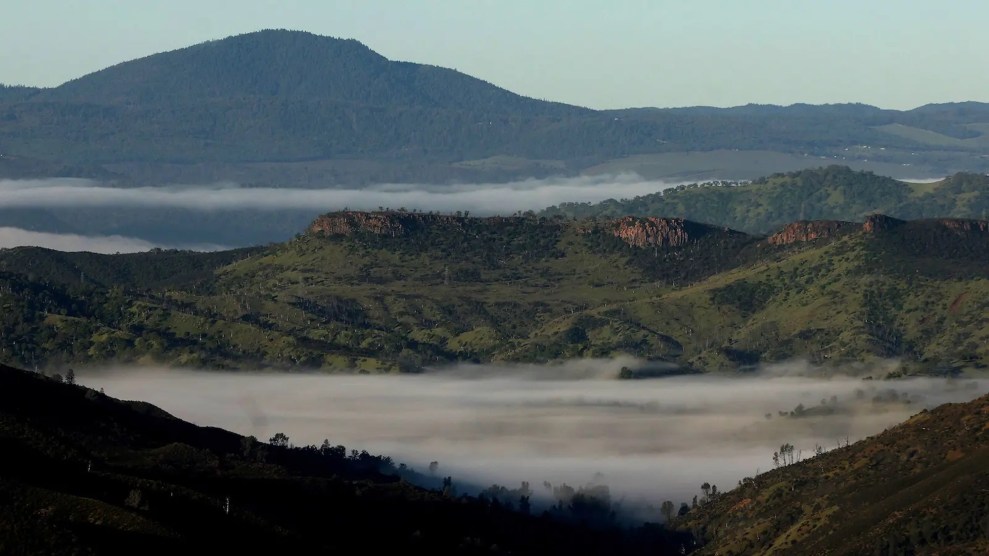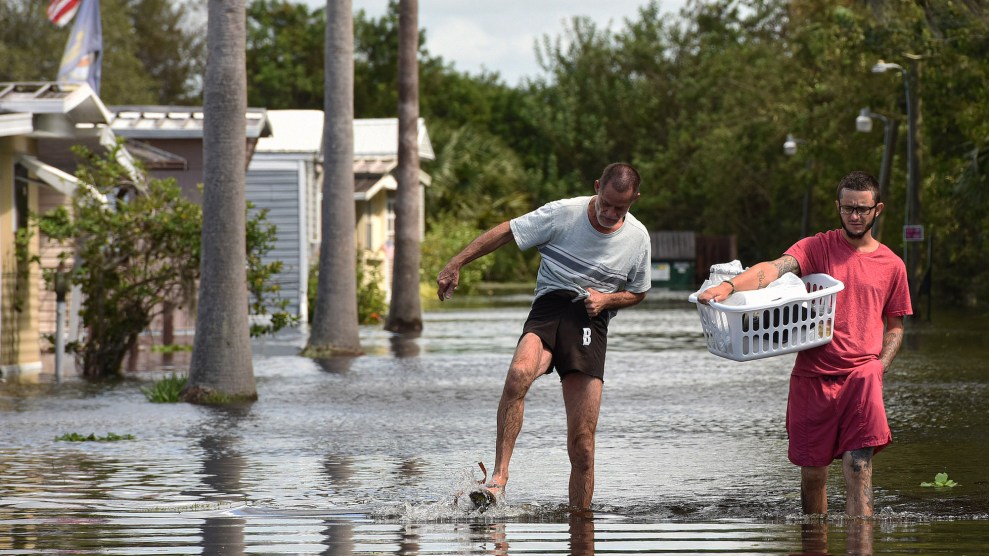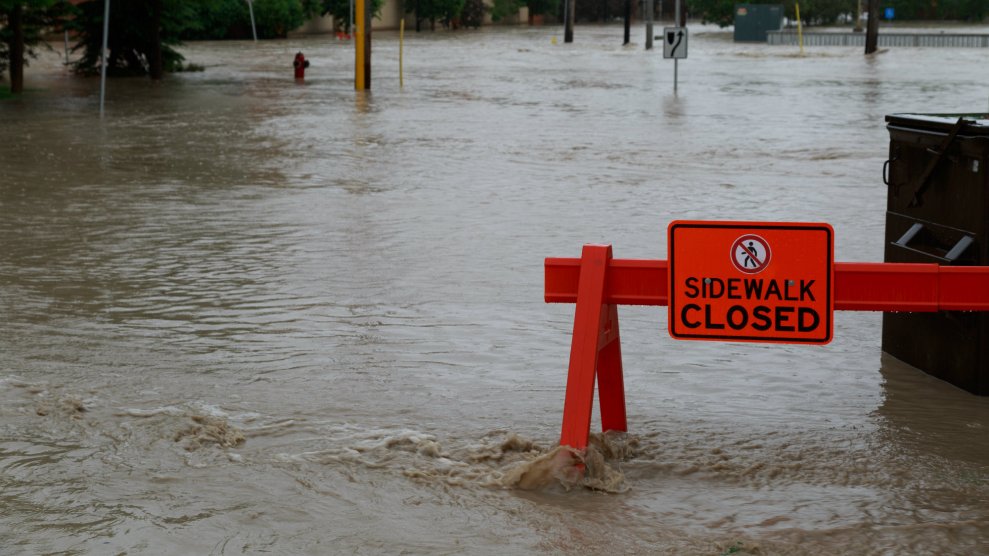
51Systems/Getty Images
The threat of sea level rise because of climate change could obliterate many coastal communities in the coming decades. Given the anti-science predisposition of the current administration, a new report shows just how bad it could get if the U.S. doesn’t take action.
“The final result, late this century and beyond, may be neighborhoods under water,” researchers from the Union of Concerned Scientists wrote in their new report, “When Rising Seas Hit Home.”
After analyzing flood data and interviewing community experts, researchers found that in some scenarios, almost 670 coastal communities will face problems of chronic inundation by the end of century. That means that by 2100, tidal flooding over 10 percent or more of useable land would occur, on average, twice a month, involving 60 percent of communities on the East and Gulf Coast and a smaller number on the West Coast. By 2100, if the worst predictions come true, President Donald Trump’s favorite estate and beach resort, Mar-a-Lago, will be completely submerged.
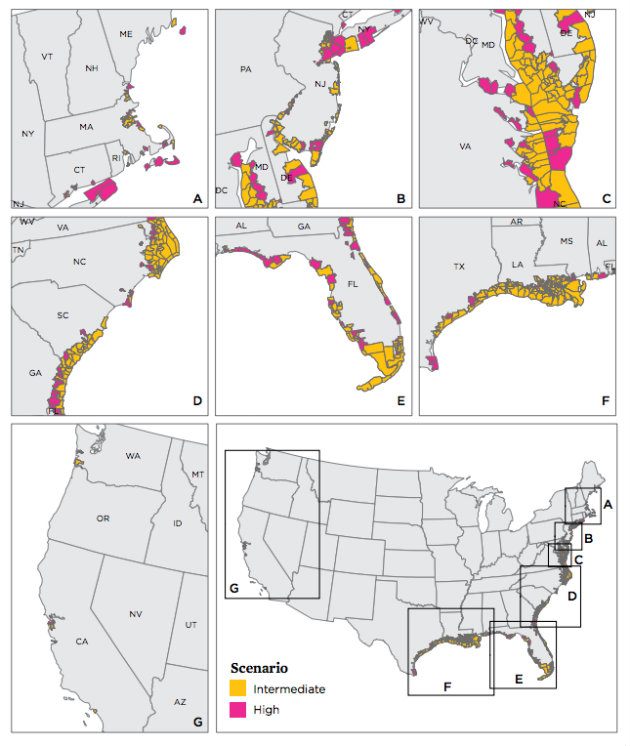
By the end of the century, 489 communities face chronic inundation in the intermediate scenario (yellow). In the high scenario, an additional 179 communities (pink)—for a total of 668—are also chronically inundated.
More than 50 cities with a high population, including Boston, Oakland, Fort Lauderdale, and four of the boroughs of New York City will also experience chronic inundation.
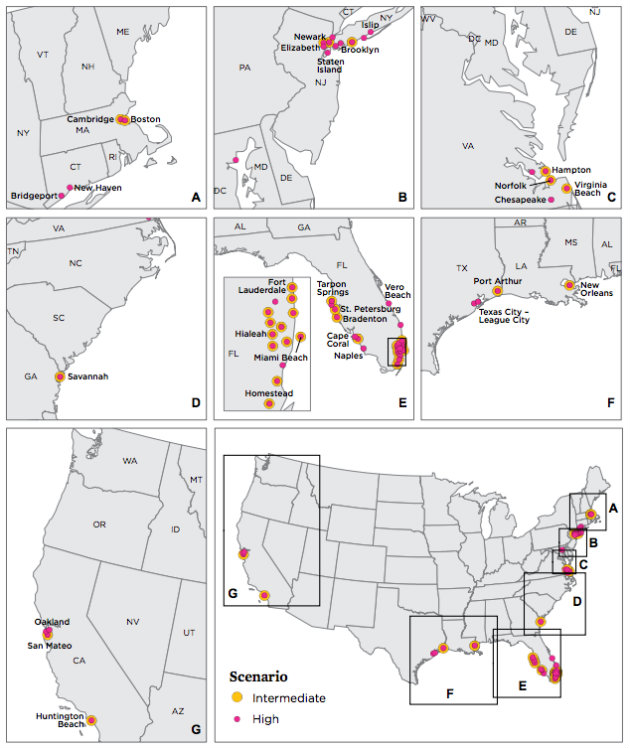
By the end of the century, 29 communities (US Census Bureau county subdivisions) with populations above 100,000 face chronic inundation with the intermediate scenario (yellow). With the high scenario, an additional 23 (pink)—for a total of 52—are also chronically inundated.
But Americans don’t have to wait until the end of the century to see the impacts of sea level rise absent any action. According to the report, by 2035 with just moderate sea level rise, nearly 170 coastal communities will be chronically inundated. The majority of these communities will be in Maryland and Louisiana, and more than half of those communities are home to lower-income neighborhoods.
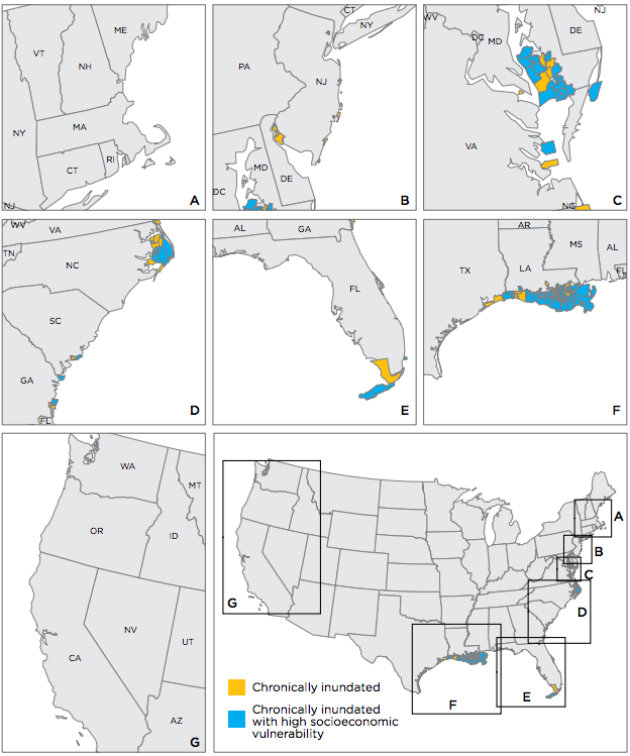
Nearly 170 coastal communities, many clustered in the East and Gulf Coasts’ lowest-lying regions, face chronic inundation within the next 20 years in the intermediate scenario .
“Low-income communities face significant social and economic challenges that put them at a disadvantage when faced with natural disasters,” researchers said. This is reflected in the story of Fouche Shepard, a resident of Charleston, South Carolina who is featured in the report. She was fired after she couldn’t get to her job because of flooding. “How many people are going to lose their jobs when they can’t get to work because their car has been destroyed by flooding?” Shepard asked.
According to researchers, the U.S. can avoid catastrophic rising sea levels by limiting development in known flood areas, updating flood-risk maps so projected sea level rise is included, and building well-funded programs for communities that are forced to relocate.
“We are at a turning point where we can still avoid some of the most serious human consequences and losses that our coasts face this century,” researchers wrote. “We have time to respond. We must use it wisely.”
Read the full report here.



